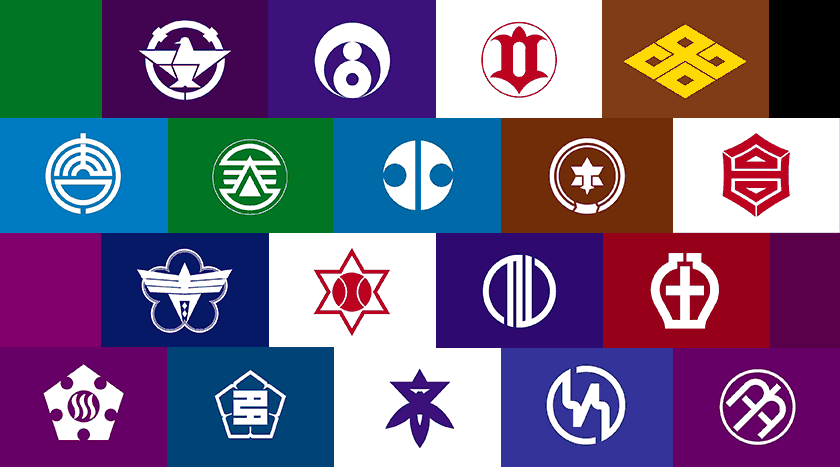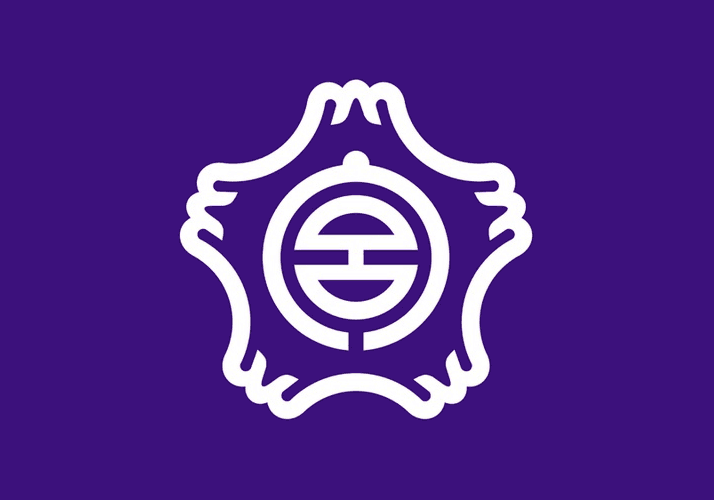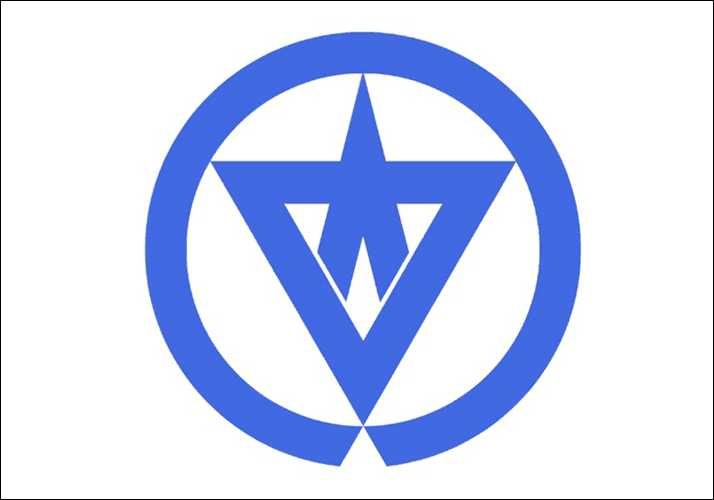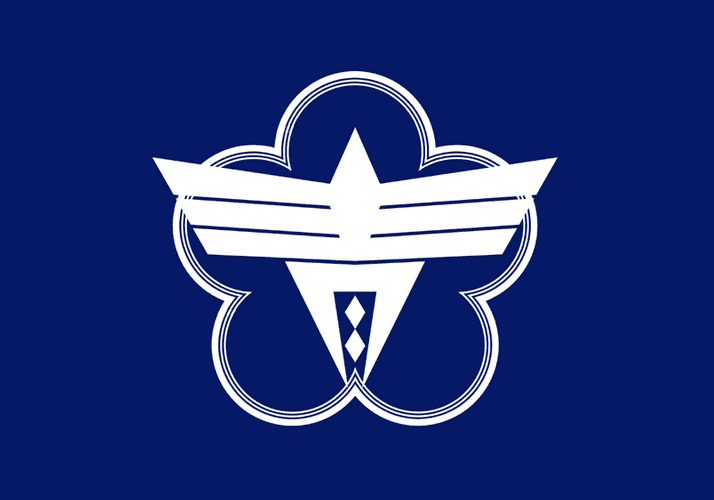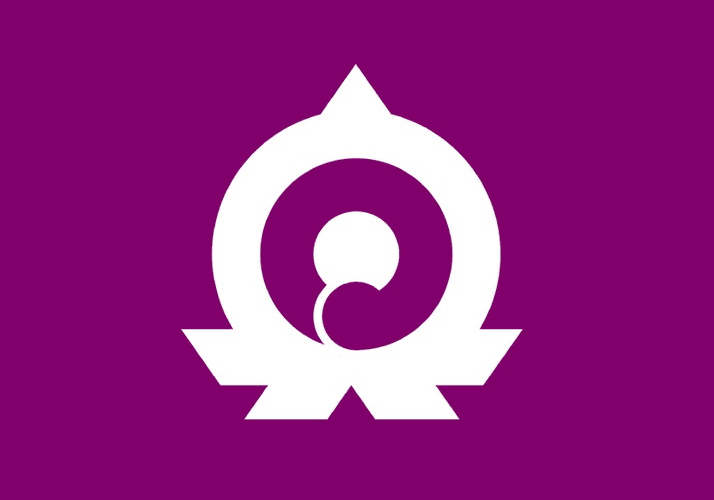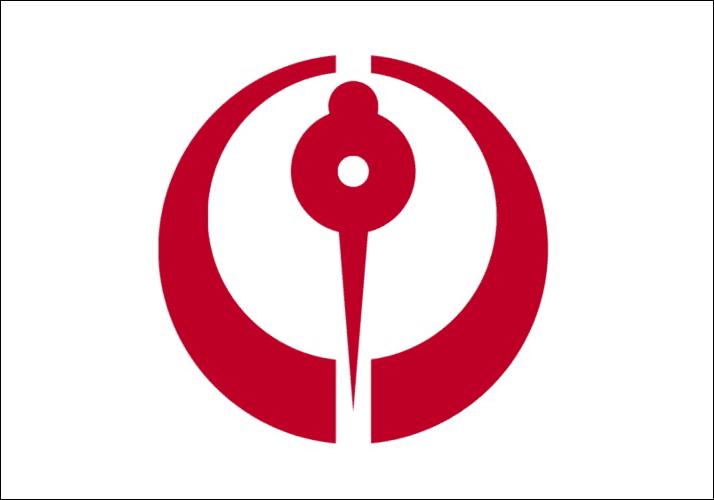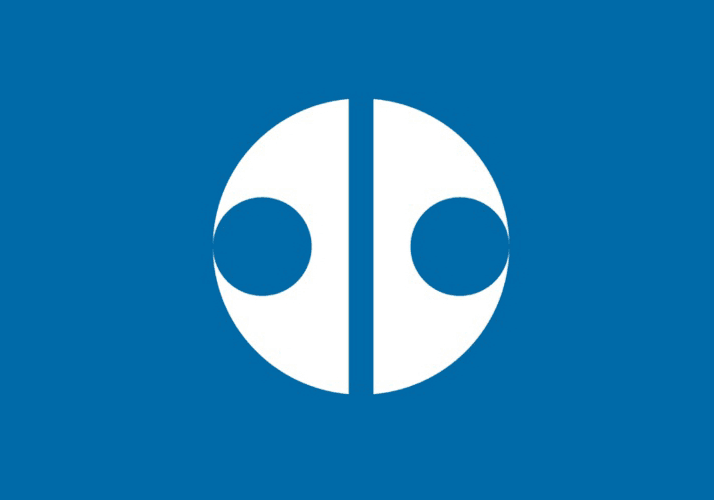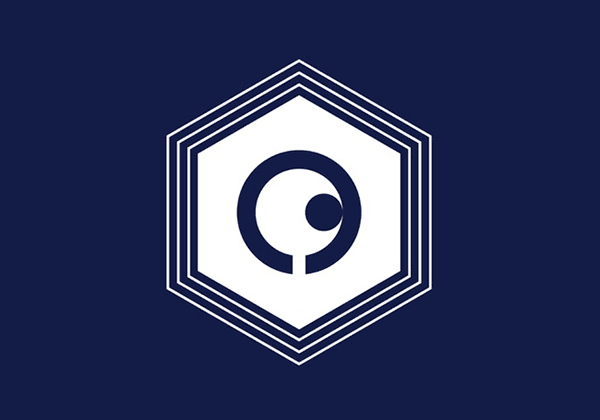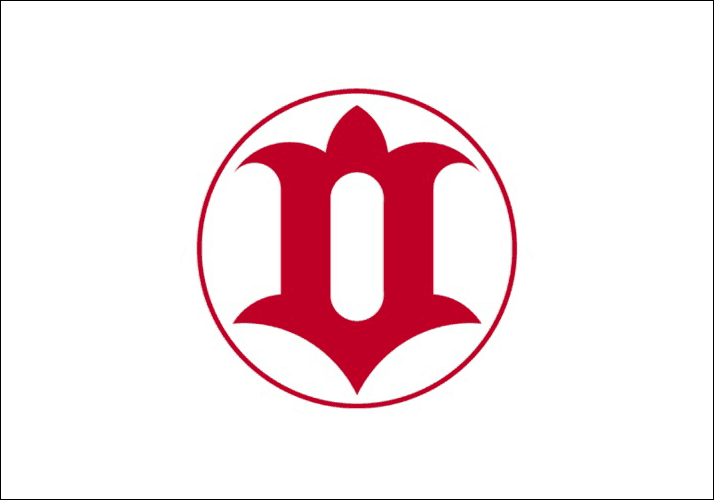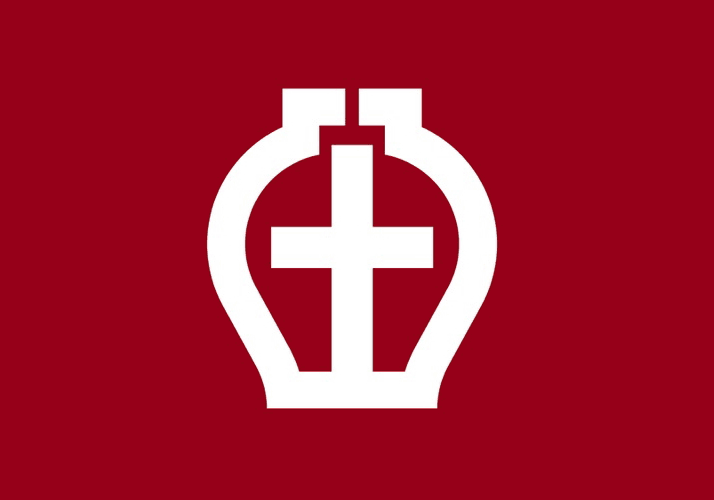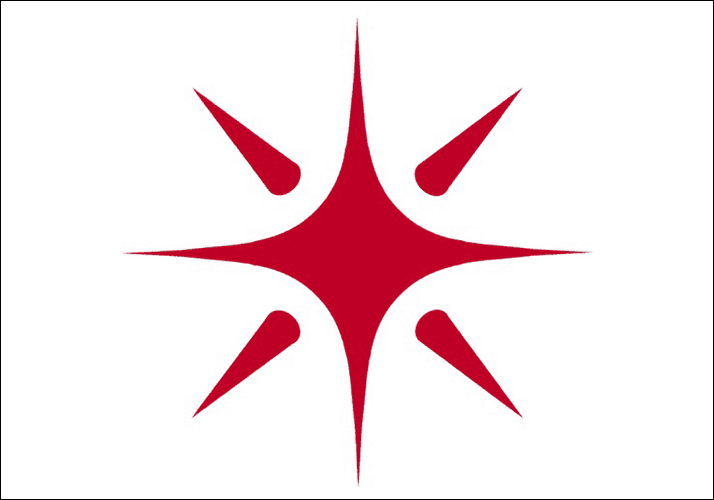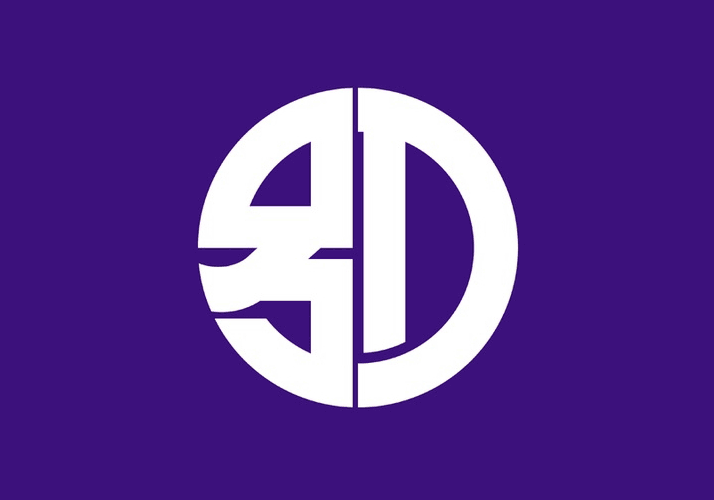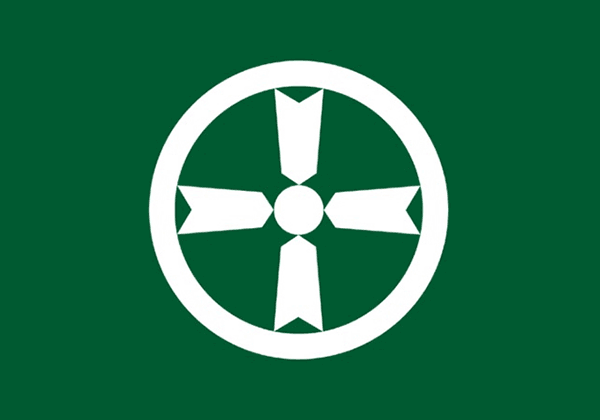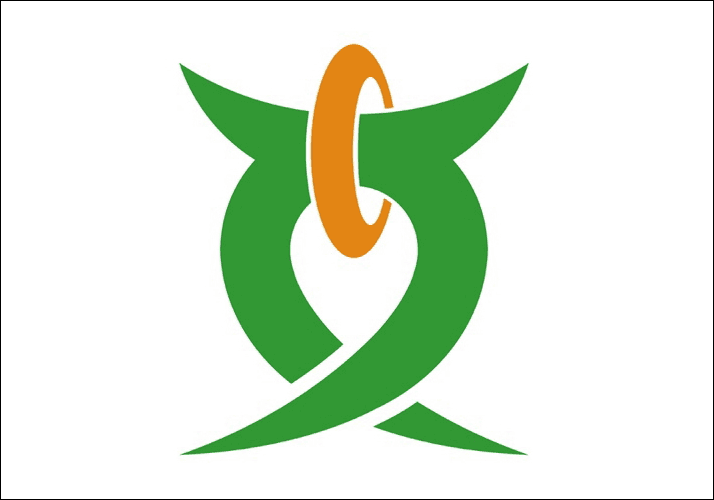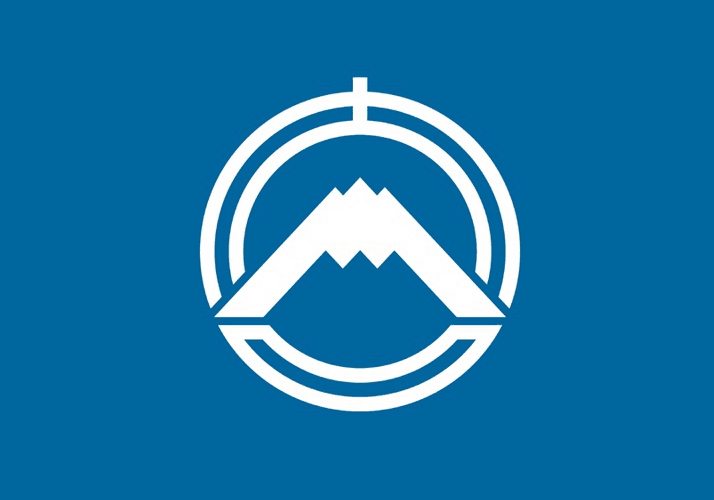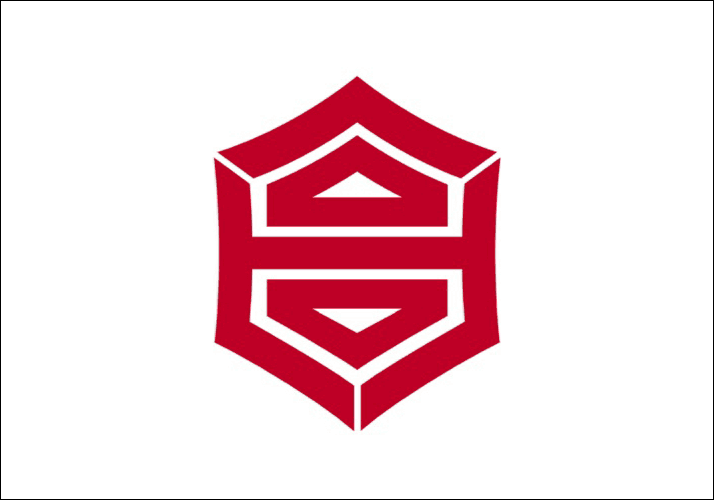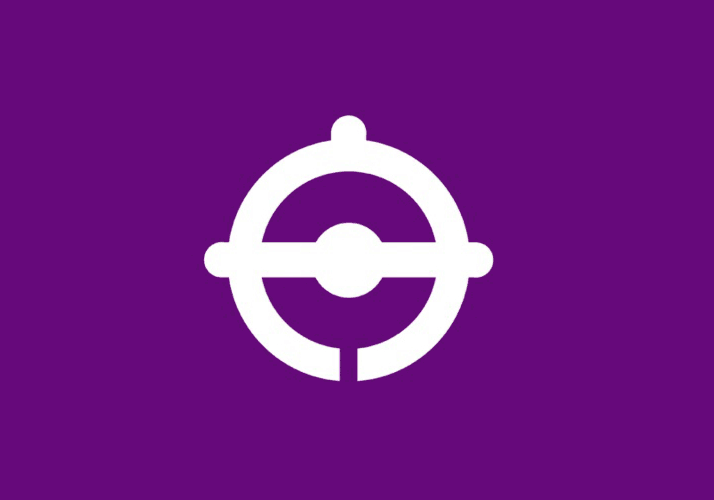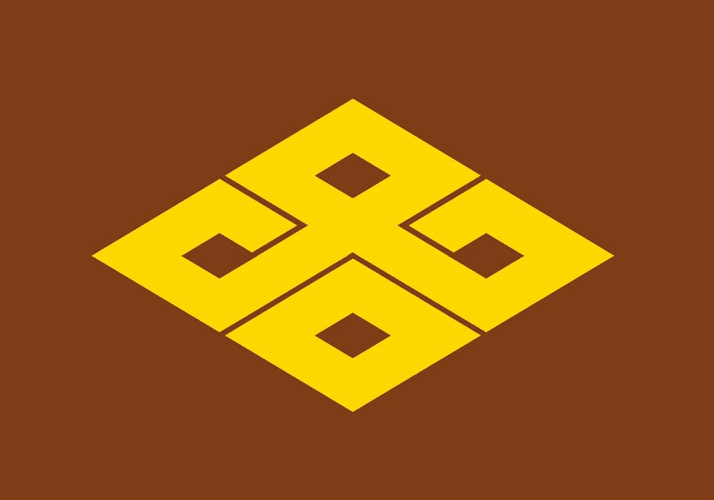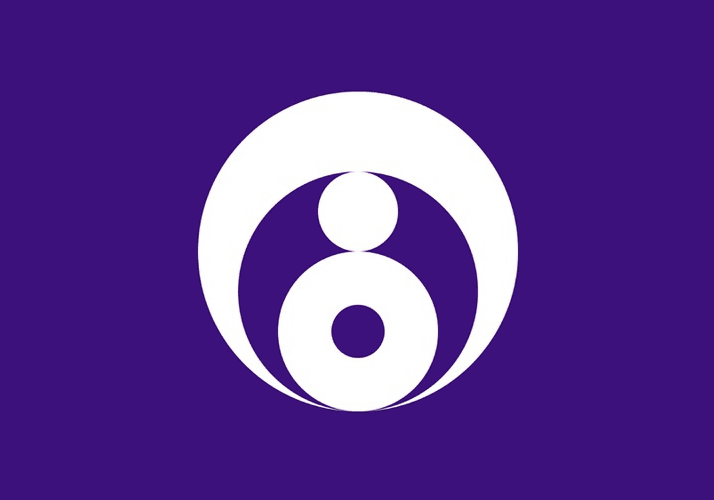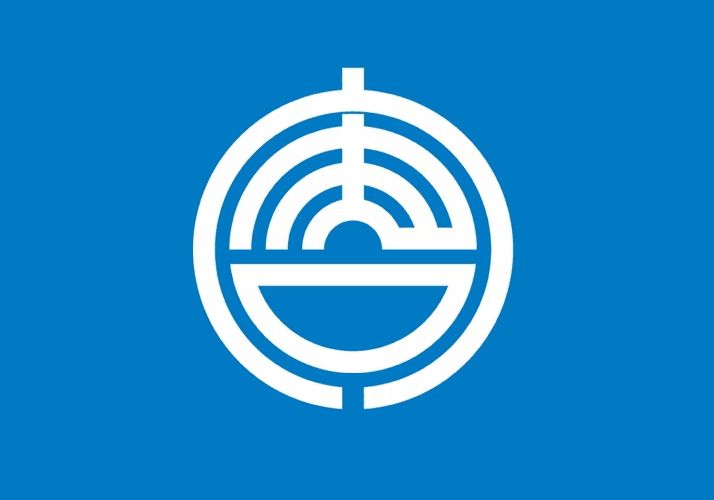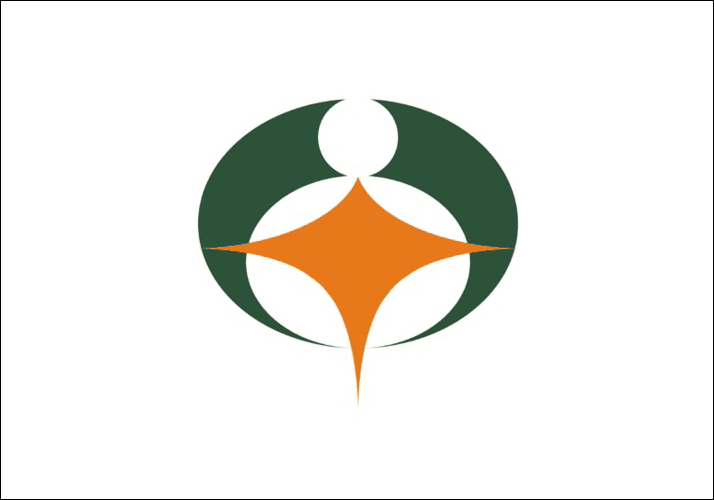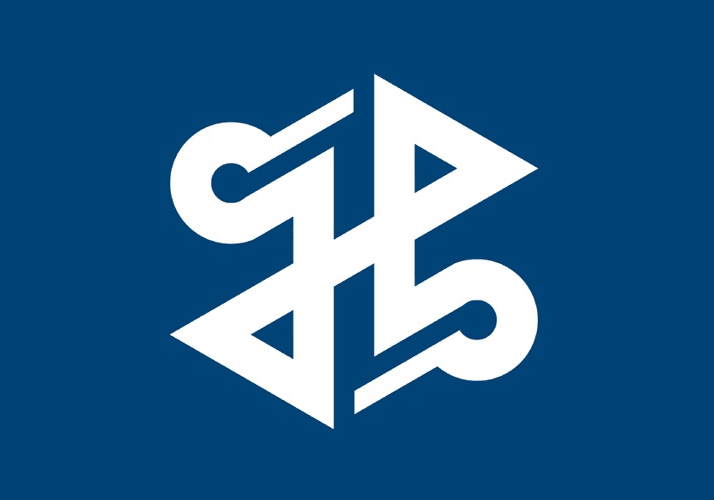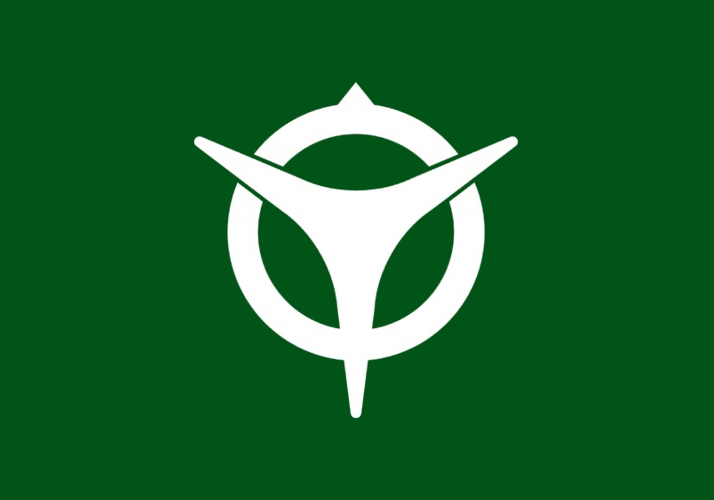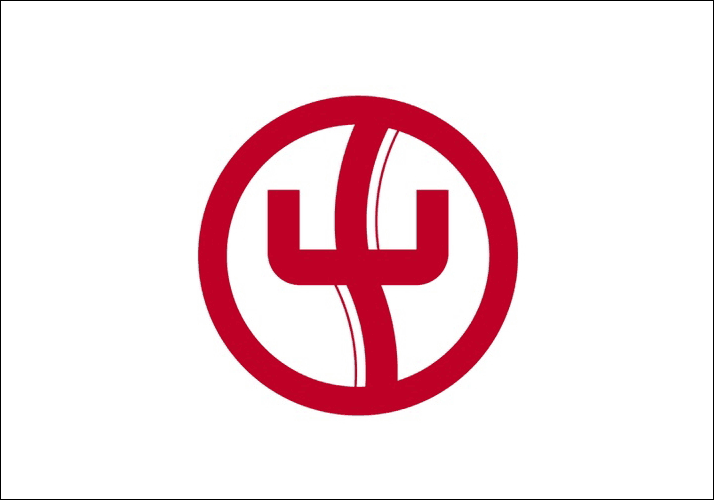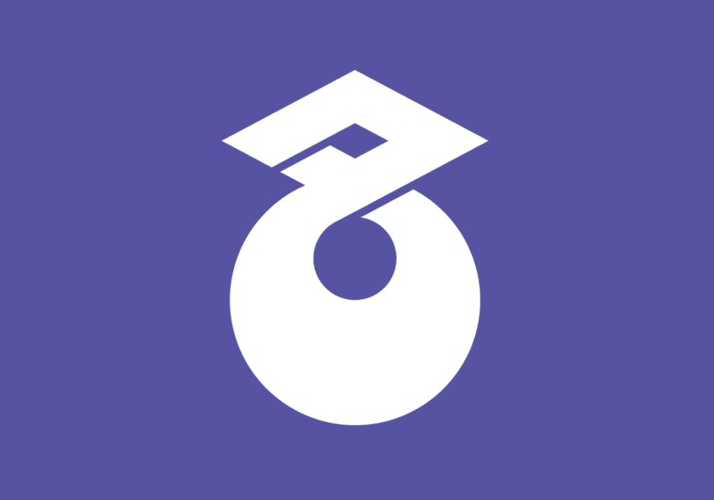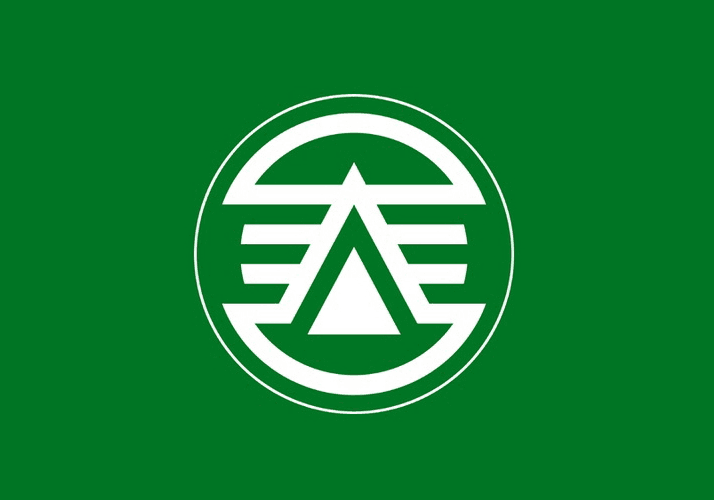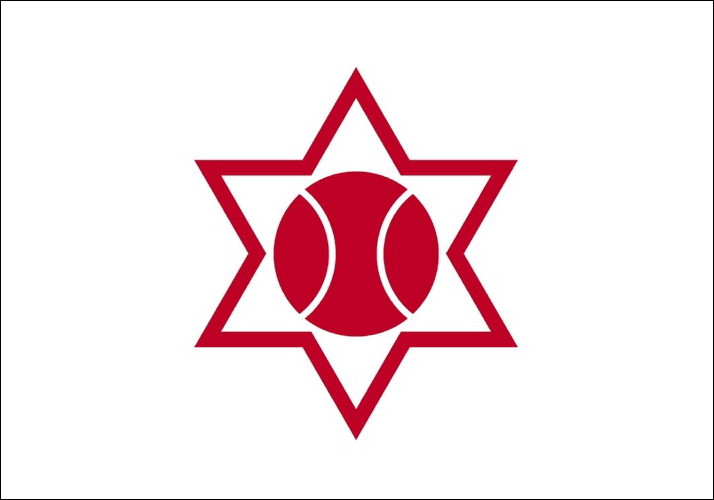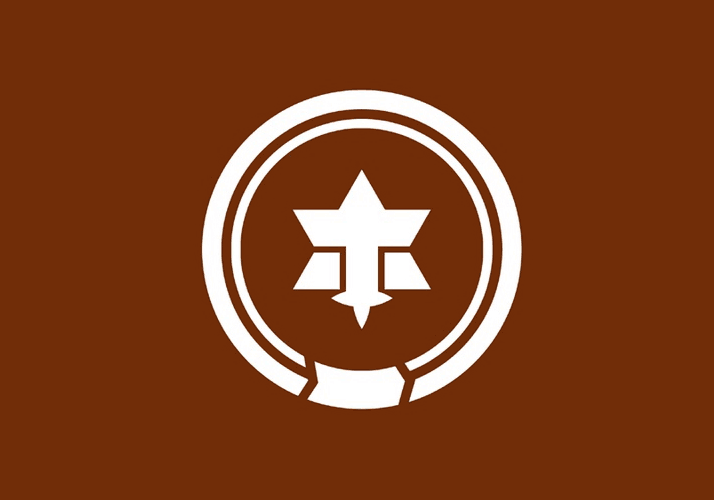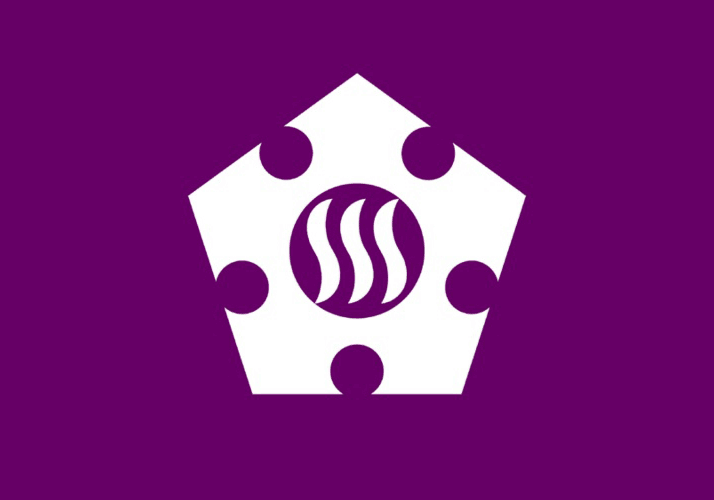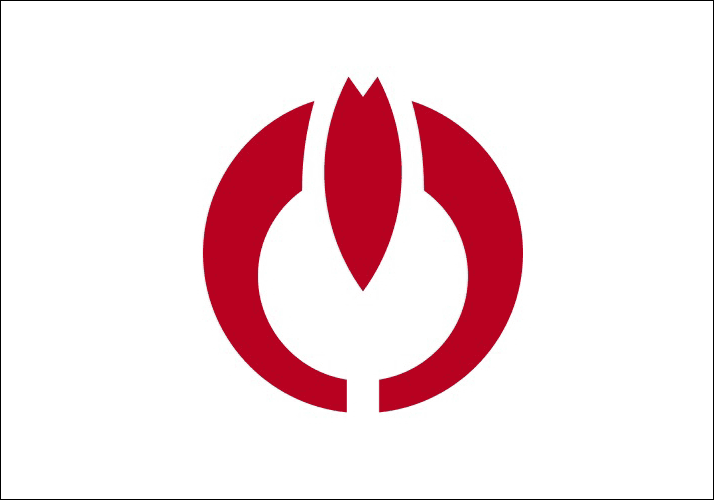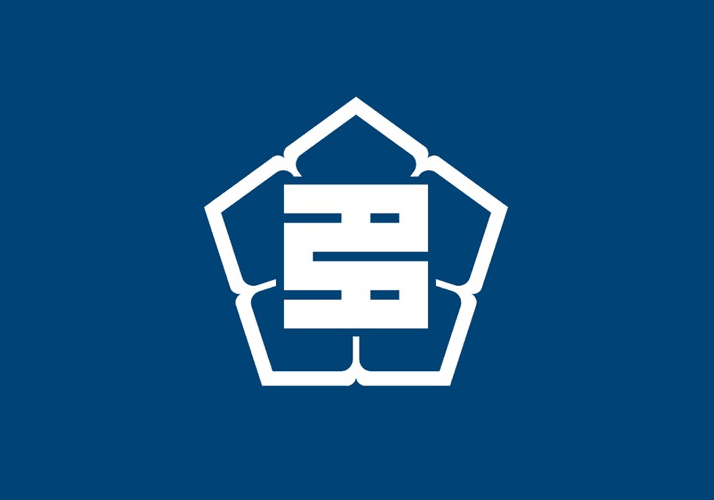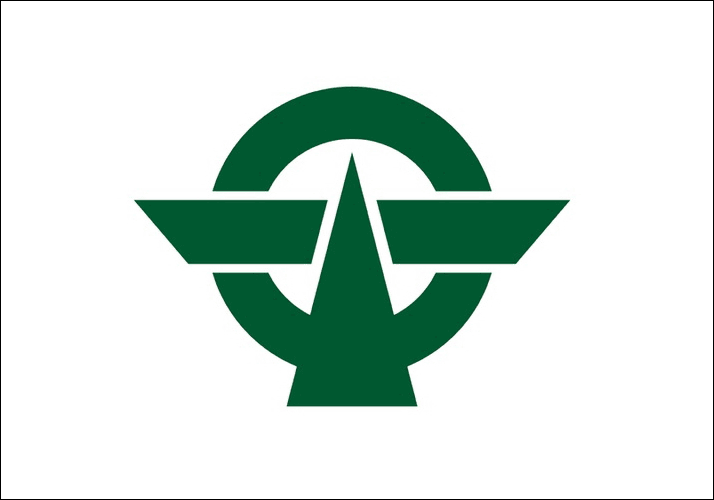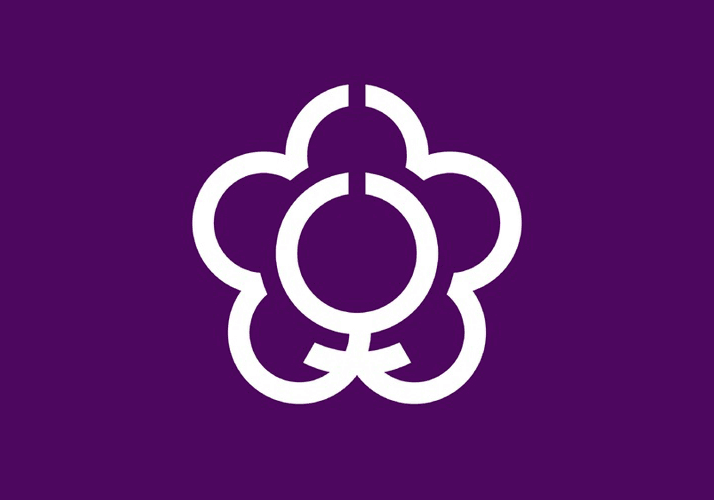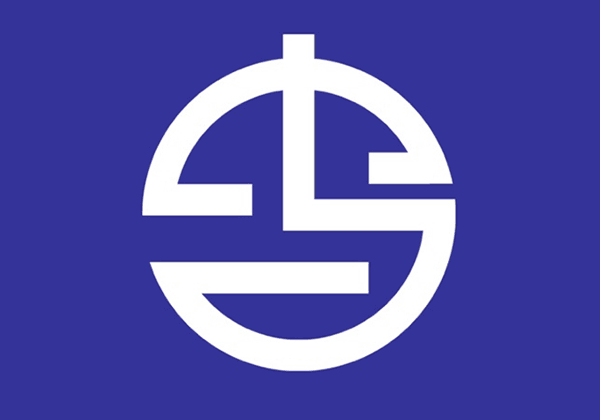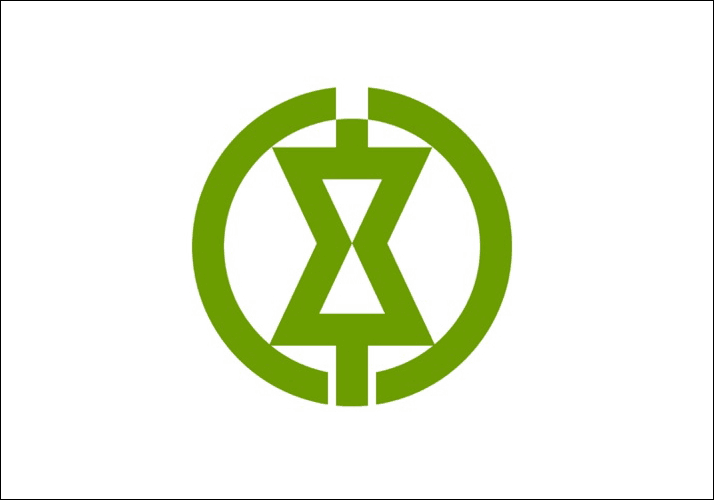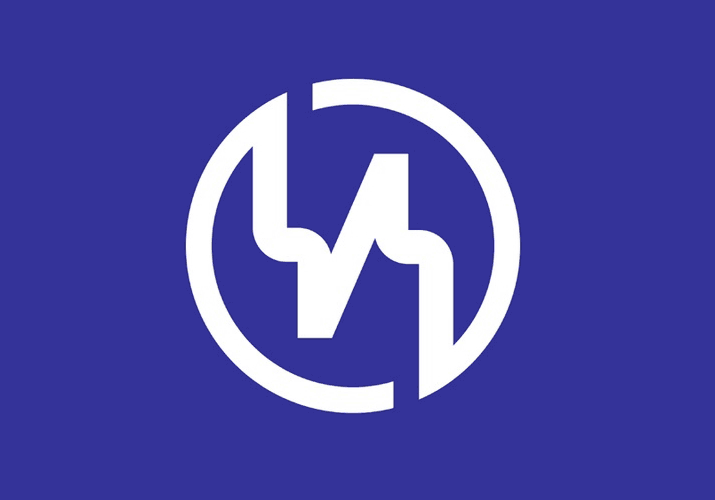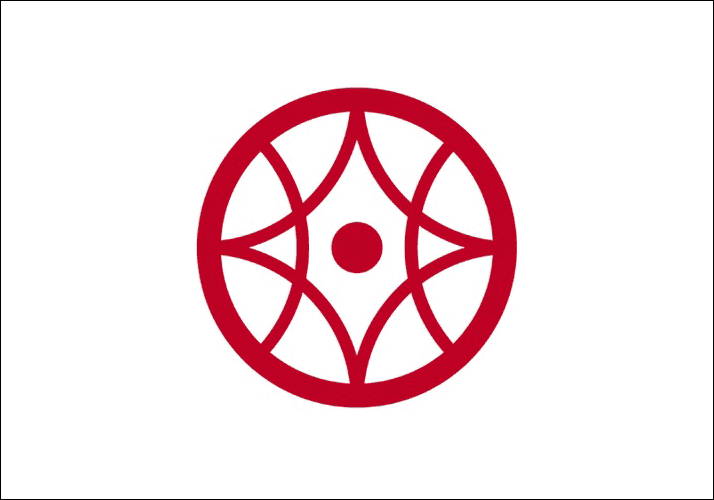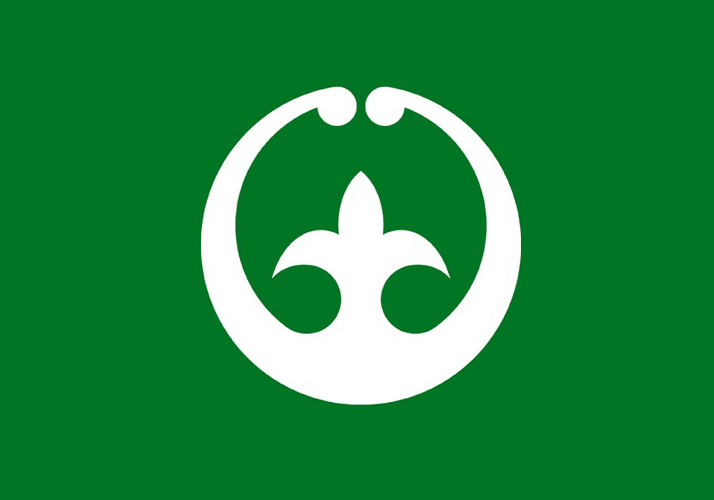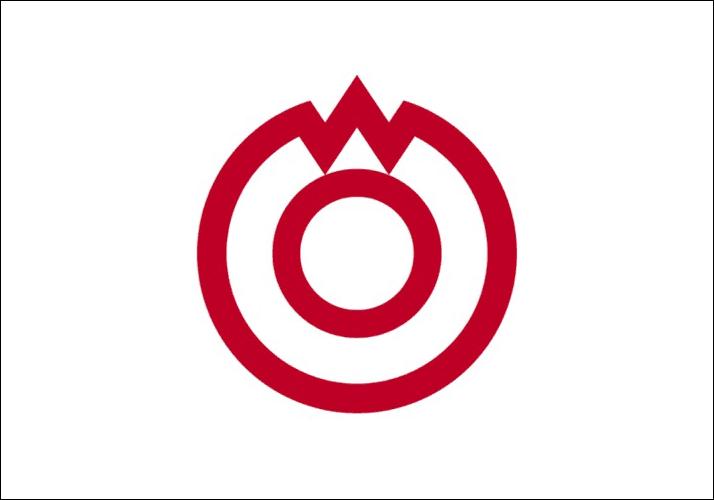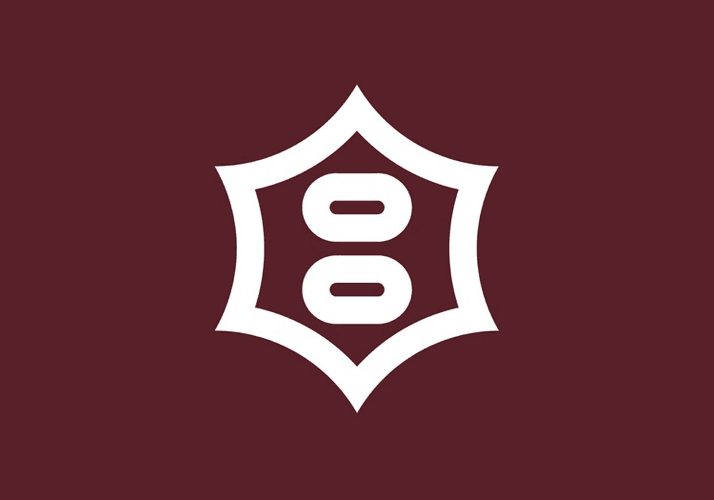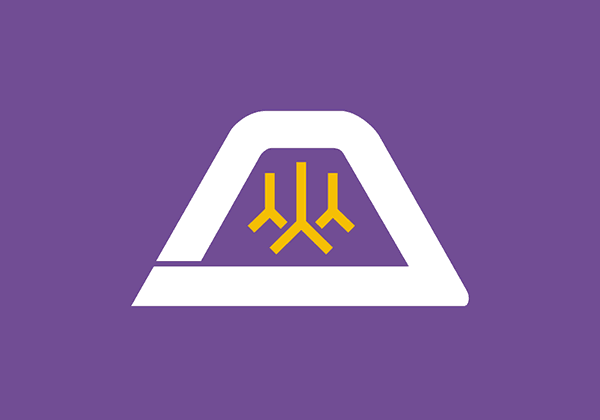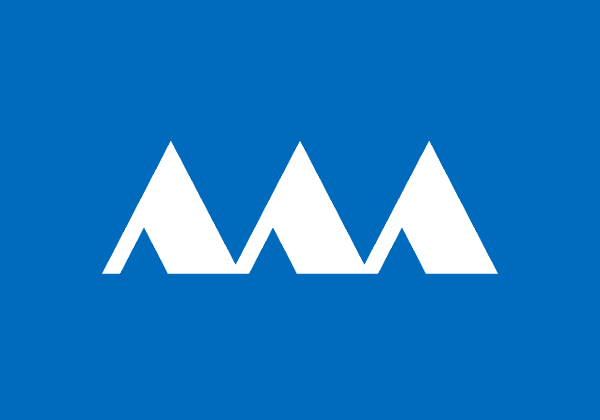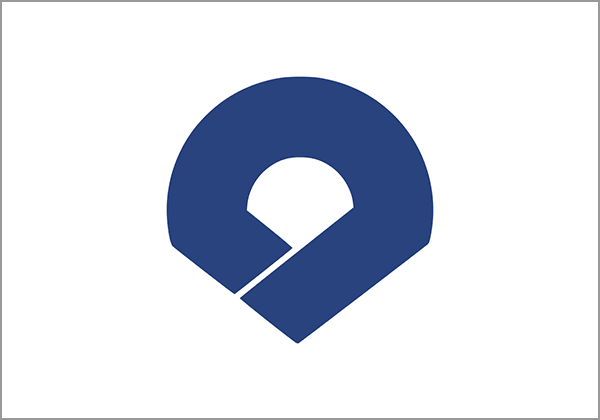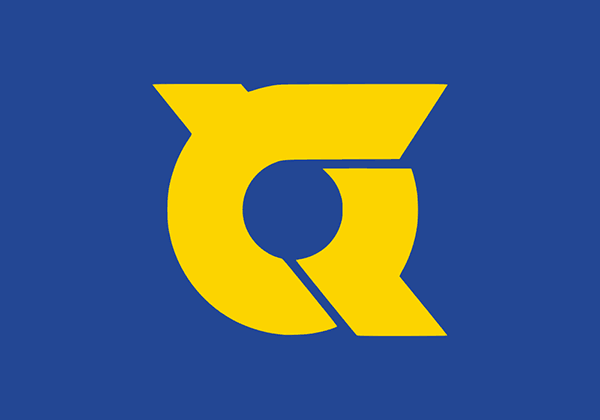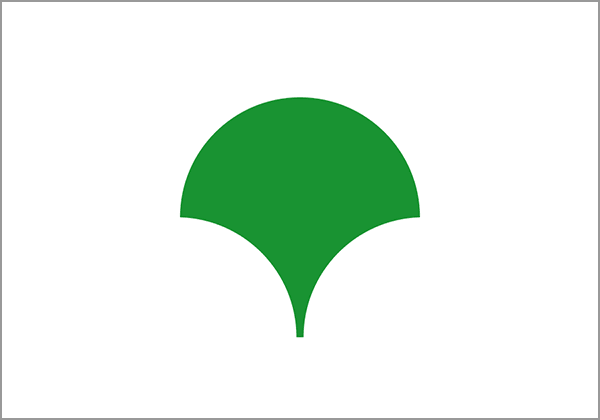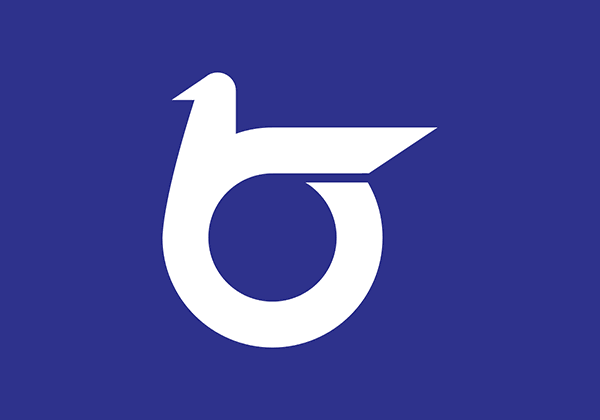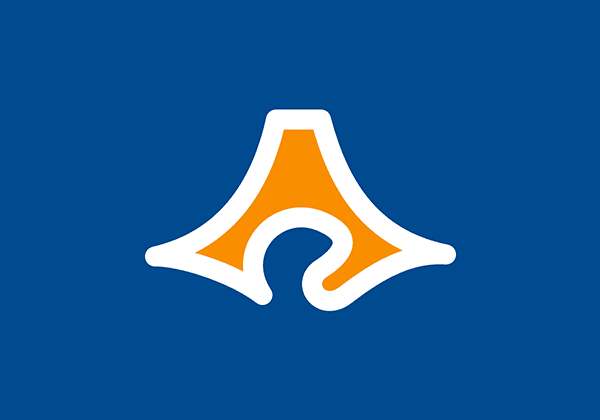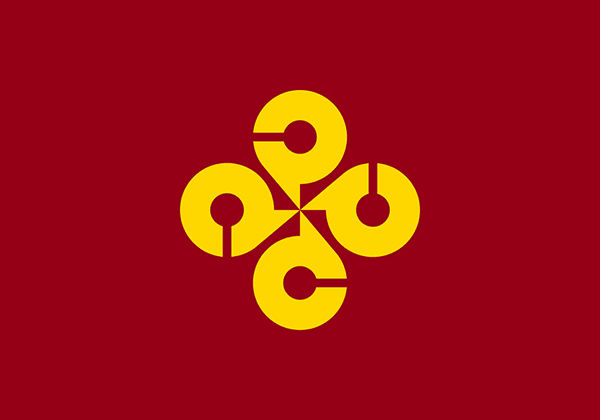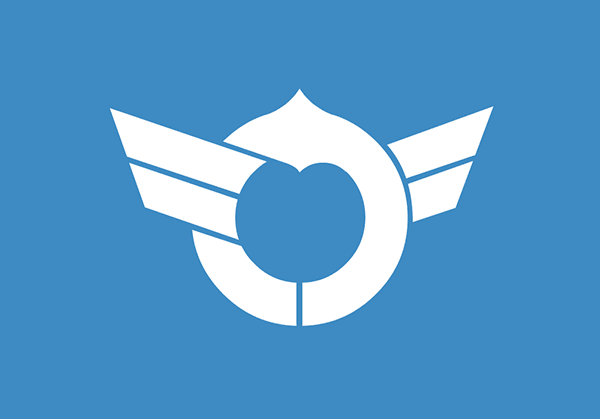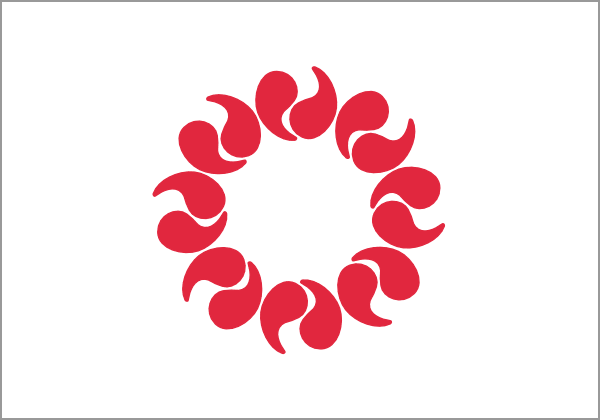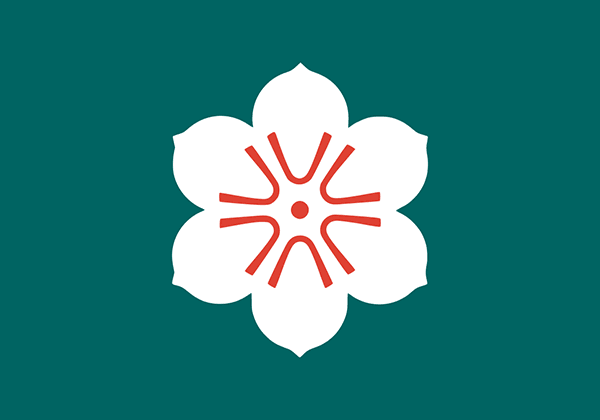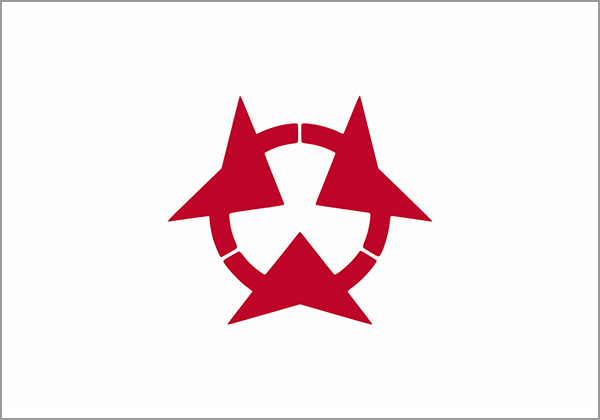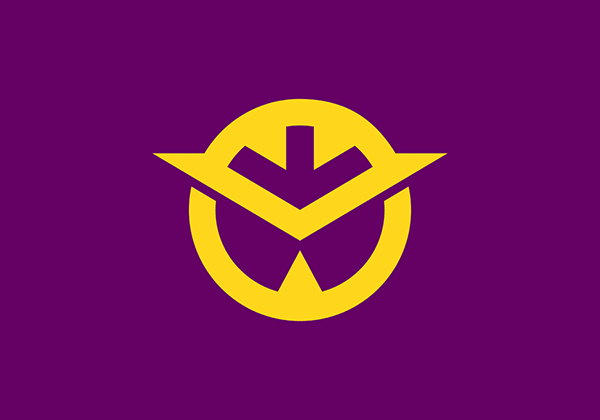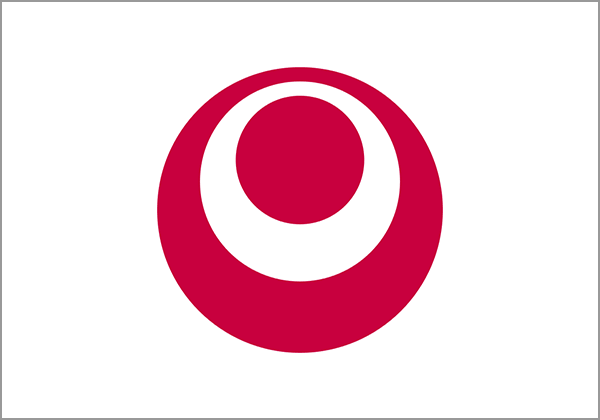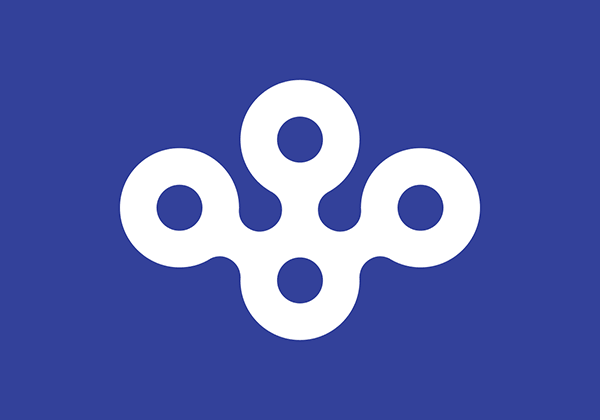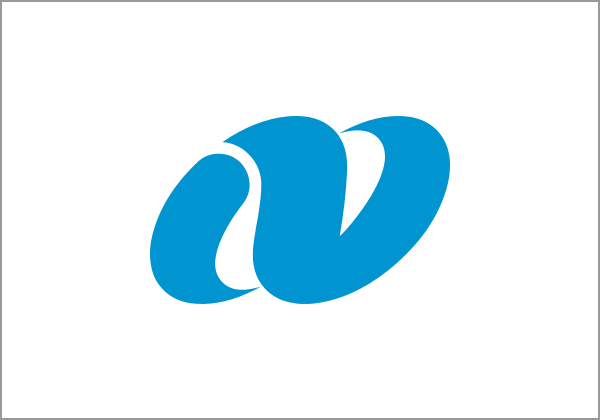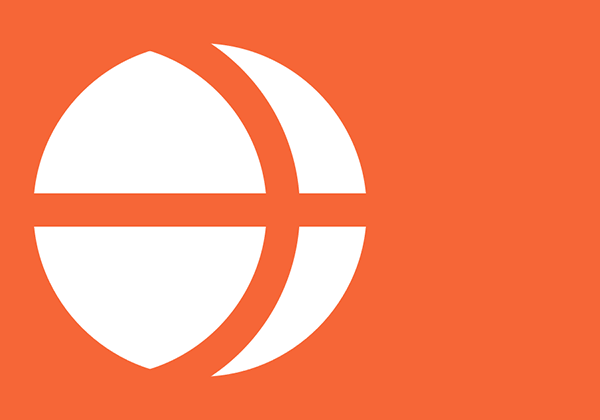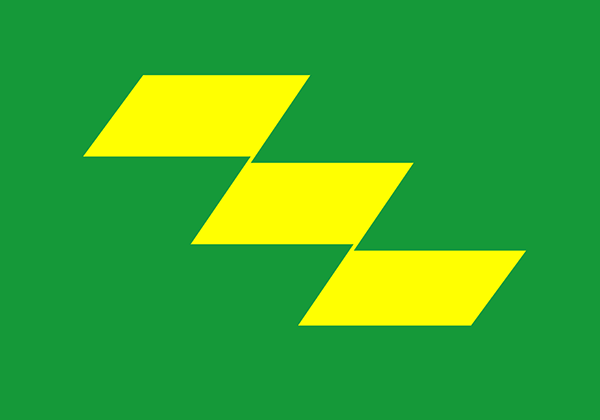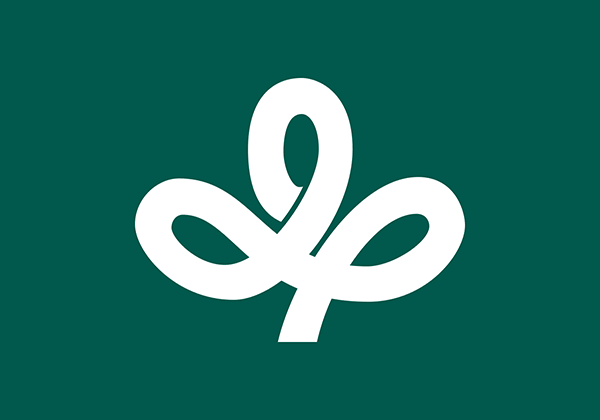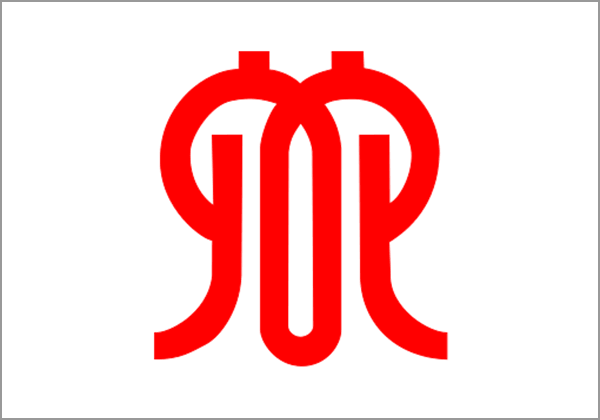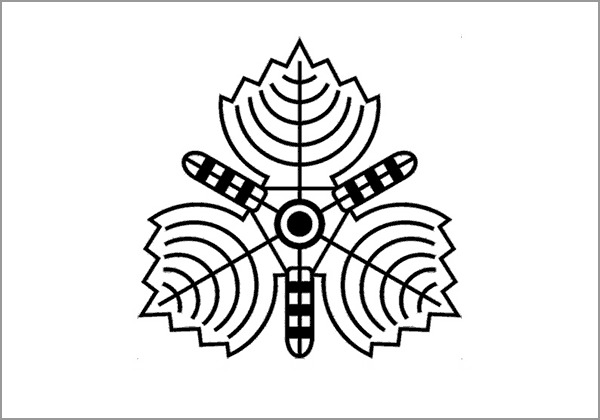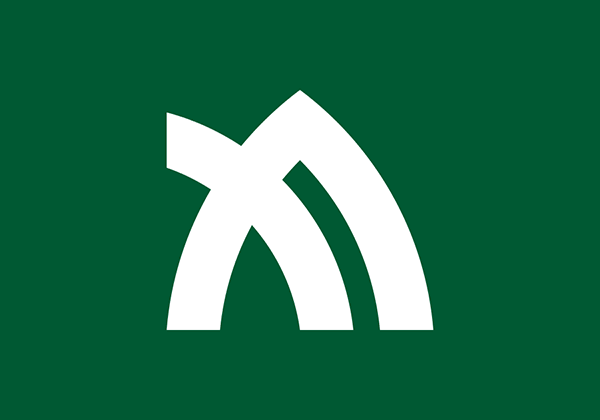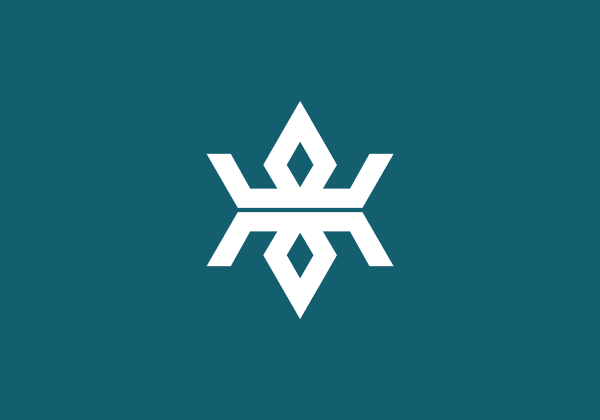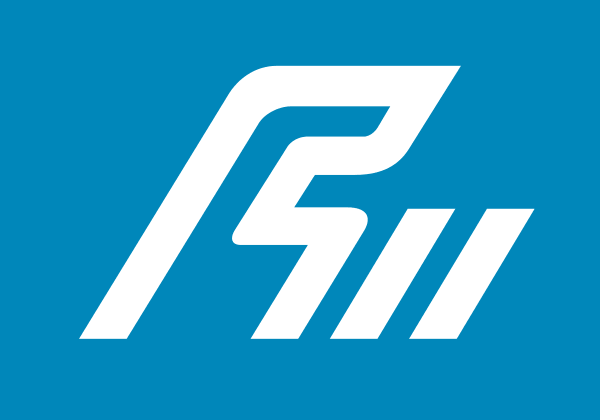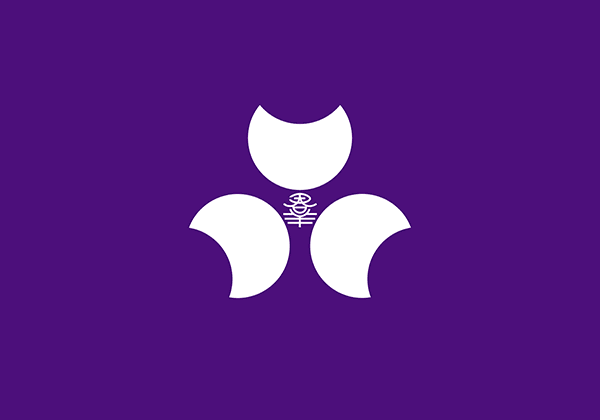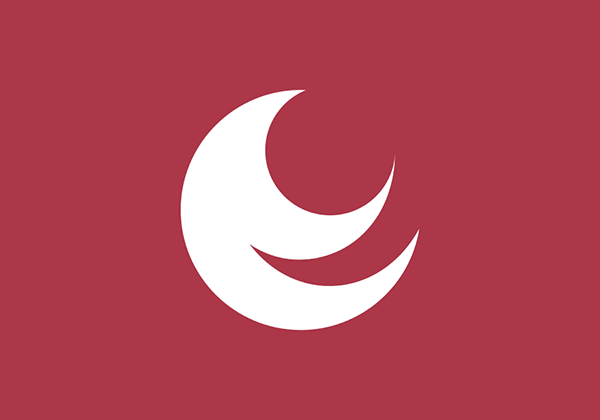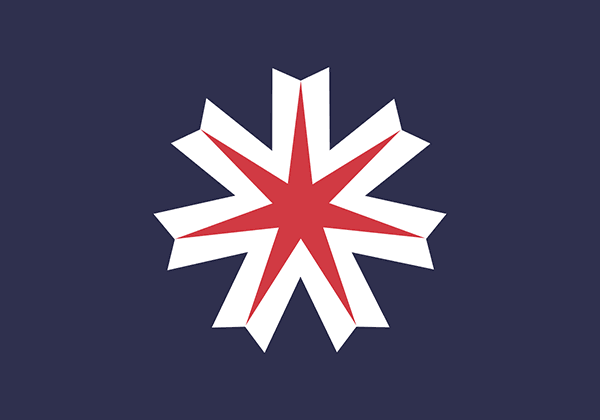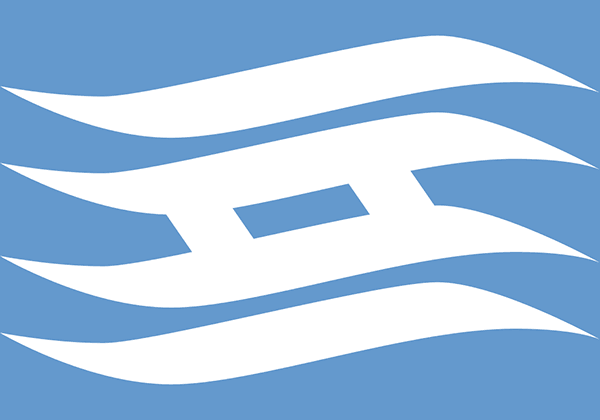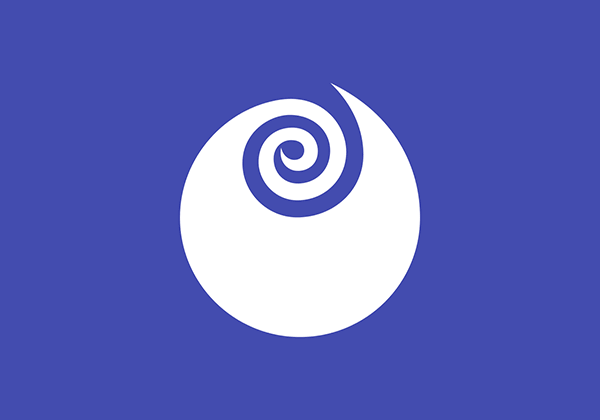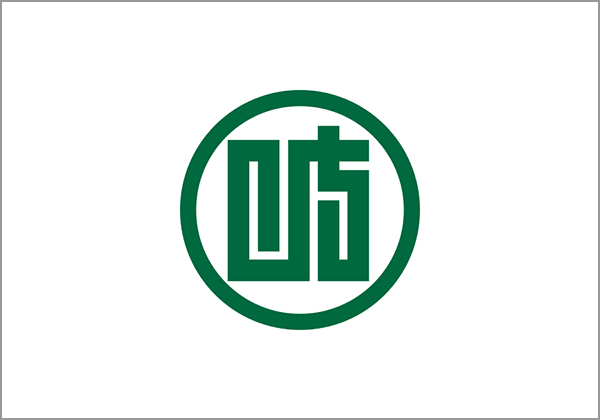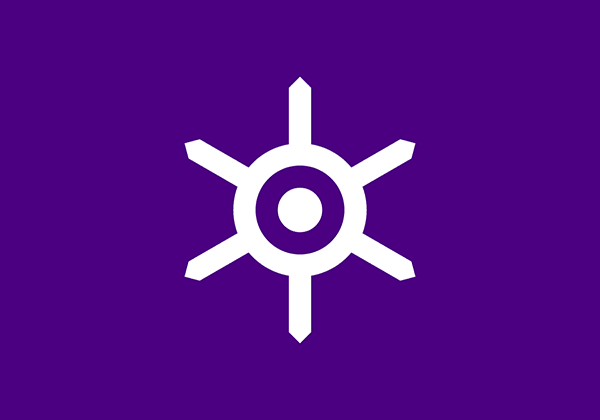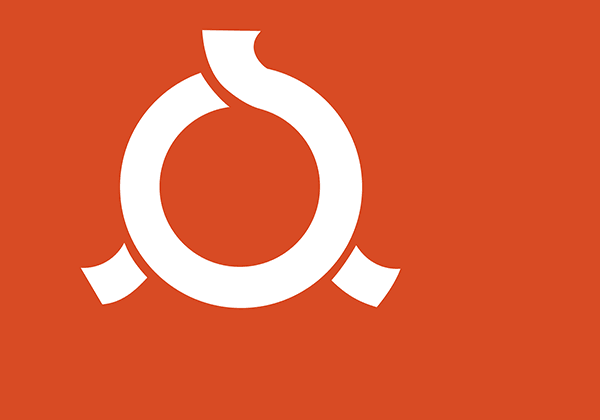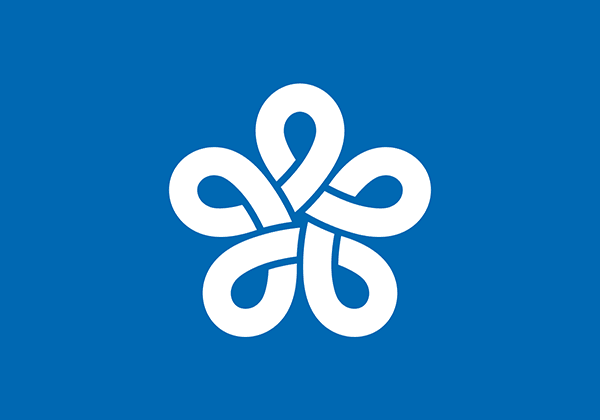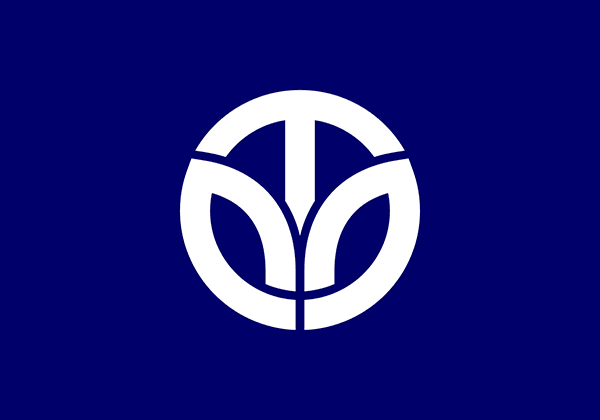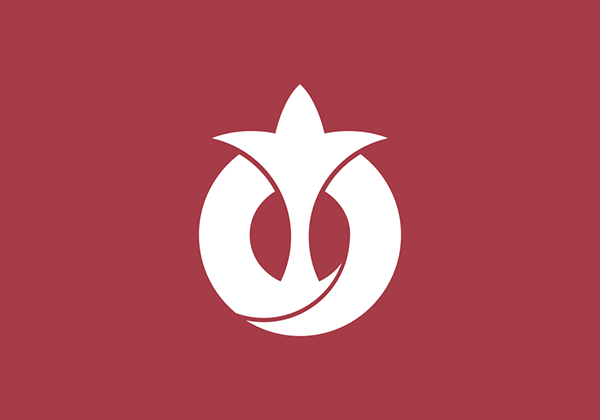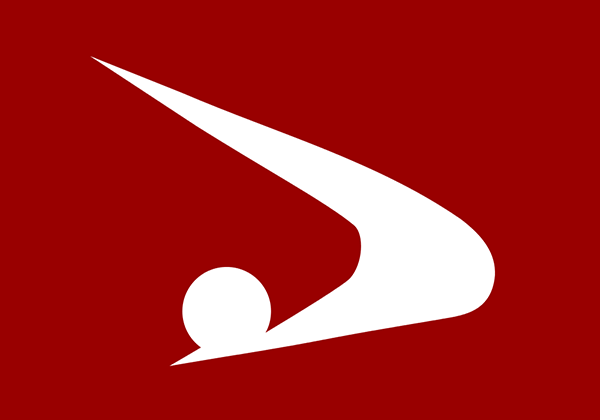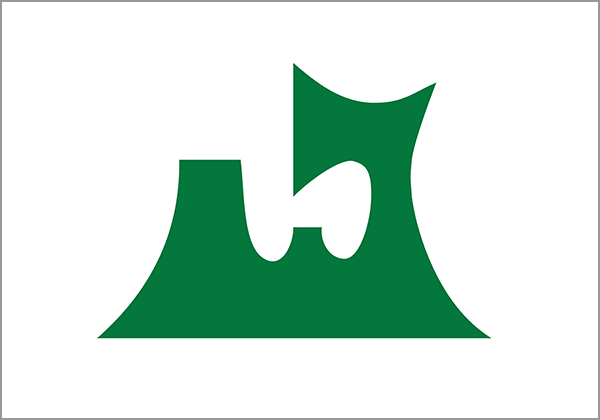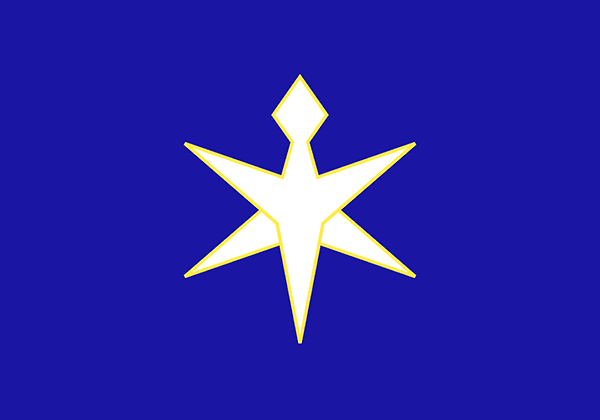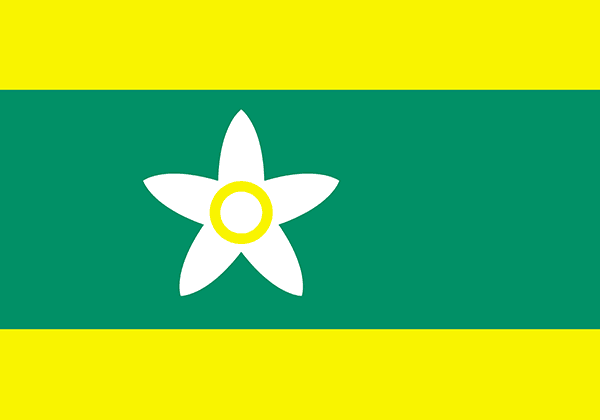Japan consists of 47 prefectures, which are further divided into cities, towns, and villages. Each of these prefectures, cities, towns and villages have their own flag. The flags take their inspiration from nature, the seasons, animals, and more, simplifying these elements to produce a minimal and strong symbol, making many of the flags especially interesting from a designer’s perspective.
In this first list, all the flags are combined with kanji.
-
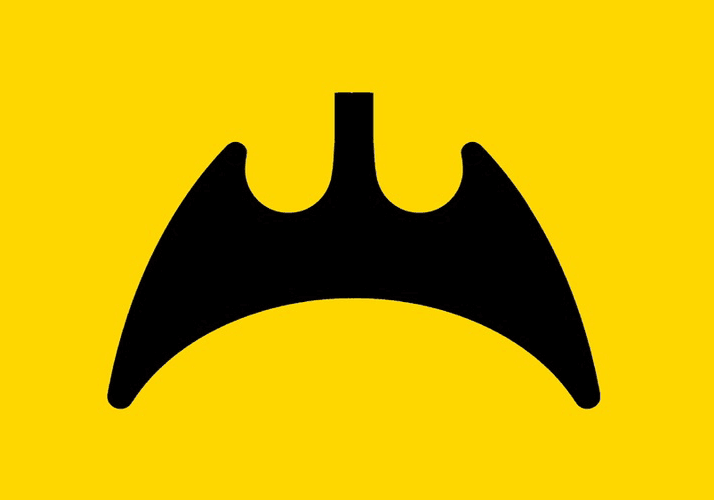
Bat-shaped 山 (yama) denotes old name of Kōmoriyama (“Bat Mountain”).
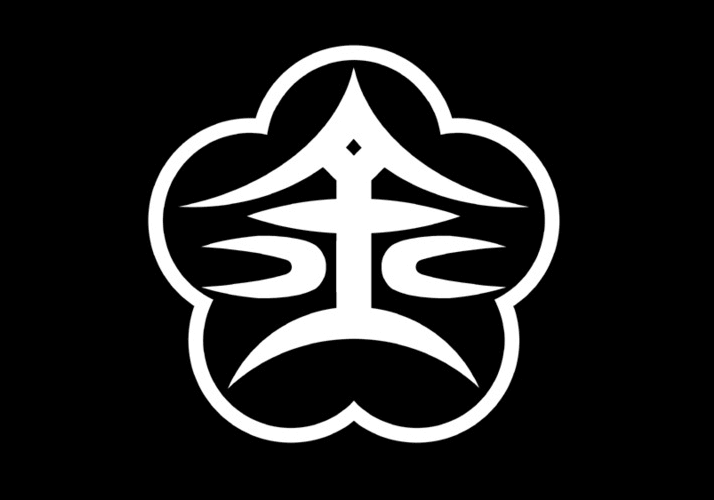
Kanazawa (Ishikawa): The kanji 金 (kana) inside a plum blossom, the Maeda clan symbol.
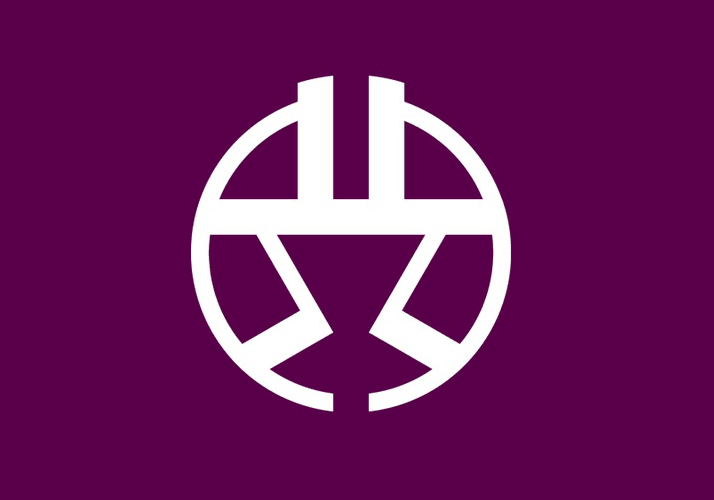
Shibuya (Tōkyō): The kanji 渋 (shibu).
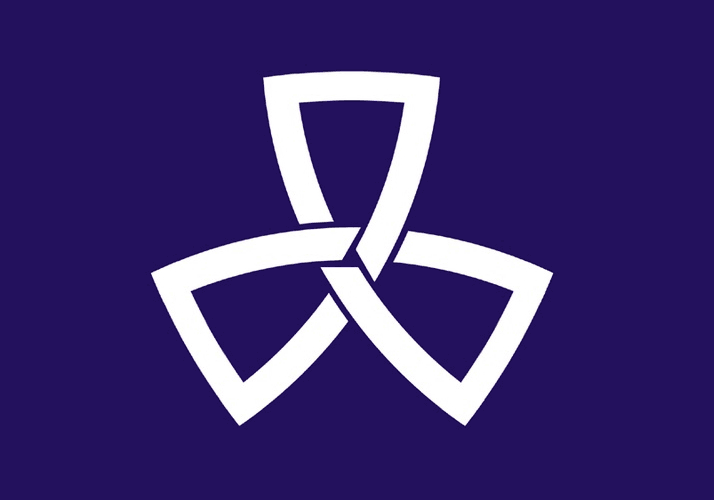
Shinagawa (Tōkyō): The kanji 品 (shina).
Fujinomiya (Shizuoka): The kanji 宮 (miya) inside a cherry blossom with Mt Fuji petals Hitachi (Ibaraki): A flower-shaped 立 (tachi) kanji inside a circle representing the kanji 日 (hi) Nishino-omote (Kagoshima): The kanji 西 (nishi) Ōme (Tōkyō): The kanji 青 (ao) and plum blossom (ume) signify 青梅 (Ōme) Okutama (Tōkyō): The kanji 奥 (oku) Hachinohe (Aomori): The kanji 八戸 (Hachinohe) in the shape of a crane (head and wings) Kitami (Hokkaidō): The kanji 北 (kita) shaped like a sash weight Yūbari (Hokkaidō): The kanji 夕 (yū) inside a hexagon representing coal Hitachi (Ibaraki): A flower-shaped 立 (tachi) kanji inside a circle representing the kanji 日 (hi) Seto (Aichi): The kanji 土 (tsuchi, or “soil”) in a clay pot represents the local pottery industry Yonago (Tottori): The kanji 米 (yona) Beppu (Ōita): The kanji 別 (betsu), the first character in 別府 (Beppu) Akita: The kanji 田 (ta) symbolizing arrows, a reference to Akita Castle Azumino (Nagano): The kanji 安 (an), the first character in 安曇野 (Azumino) Fujiyoshida (Yamanashi): Mt Fuji and the kanji 吉 (yoshi) Kōchi (Kōchi): The kanji 高 (kō) Funabashi (Chiba): The kanji 舟 (funa, or “boat”) Kakamigahara (Gifu): The kanji 各 (kaku), the first character in 各務原 (Kakamigahara) Izumo (Shimane): The kanji 出 (i) Ishinomaki (Miyagi): The kanji 石 (ishi) Karatsu (Saga): The kanji 唐 (kara) Kōka (Shiga): The kanji 甲 (kō) Shinjuku (Tōkyō): The kanji 新 (shin) Uji (Kyōto): The kanji 宇 (u) Nagareyama (Chiba): Seal script style kanji 流 (nagare), representing the Edogawa River Nabari (Mie): The kanji 名 (na) Kasuga (Fukuoka): 春 (haru), the first character in 春日 (Kasuga), shaped like local ancient tombs Takatsuki (Ōsaka): The kanji 高 (taka) Matsumoto (Nagano): Pine (matsu) needles encircle the kanji 本 (moto) Tachikawa (Tōkyō): The kanji 立 (tachi) and 川 (kawa) Koganei (Tōkyō): The kanji 小 (ko) shaped like a cherry blossom Tajimi (Gifu): The kanji 多 (ta) and a Chinese bellflower Tama (Tōkyō): The kanji 多 (ta) shaped like a pigeon Kodaira (Tōkyō): The kanji 小平 (Kodaira) Tenri (Nara): The plum blossom-shaped 天 (ten) is similar to the symbol of the Tenrikyo religion Yonaguni (Okinawa): The kanji 与 (yo) Monbetsu (Hokkaidō): The kanji 紋 (mon) Sendai (Miyagi): The kanji 仙 (sen) Suzuka (Mie): The kanji 鈴 (suzu) shaped like a bell Takatsuki (Ōsaka): The kanji 高 (taka) Taketomi (Okinawa): The kanji 竹 (take) Yokkaichi (Mie): The kanji 四日 (yokka) Tsuchiura (Ibaraki): The kanji 土 (tsuchi) represents a flower and the waves on Lake Kasumigaura Yamaguchi (Yamaguchi): The kanji 山口 (Yamaguchi) Utsunomiya (Tochigi): The kanji 宮 (miya) looks like a turtle shell, a reference to Utsunomiya Castle Hachijō (Tōkyō): The kanji 八丈 (Hachijō) arranged in the shape of a bird
Prefectural flags
Each modern prefecture has a unique flag, most often a bicolour geometric highly stylised design (mon), often incorporating the letters of Japanese writing system. A distinct feature of these flags is that they use a palette of colours not usually found in flags, including orange, purple, aquamarine and brown.
Some prefectures also have alternative official flags called “symbol flags”. They may be used on less formal occasions. Famous symbol flags include the one used in Tokyo.
